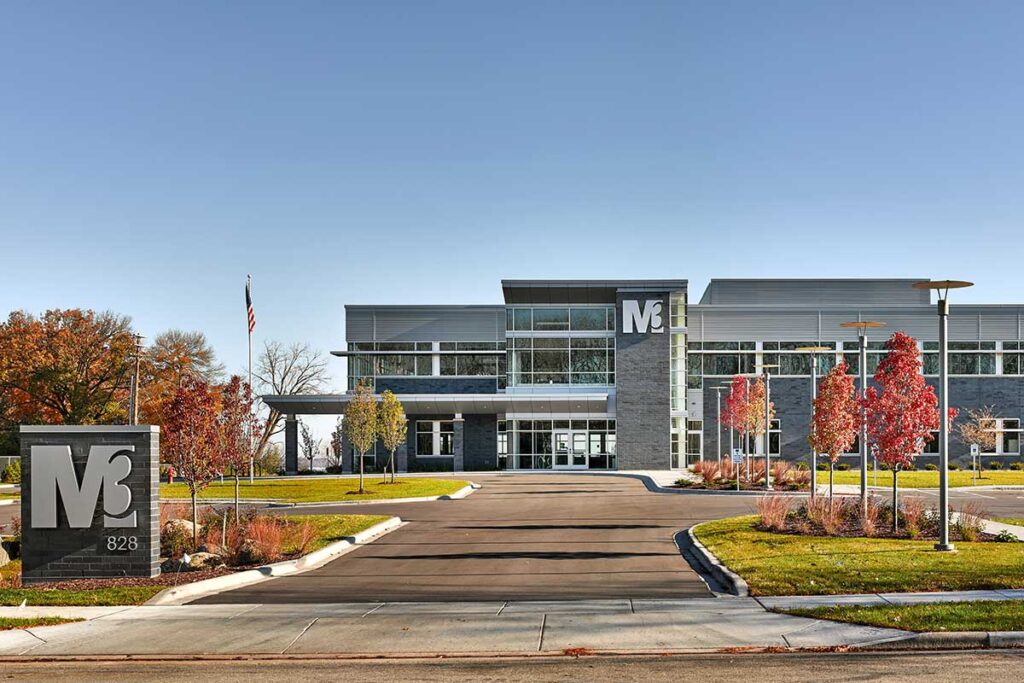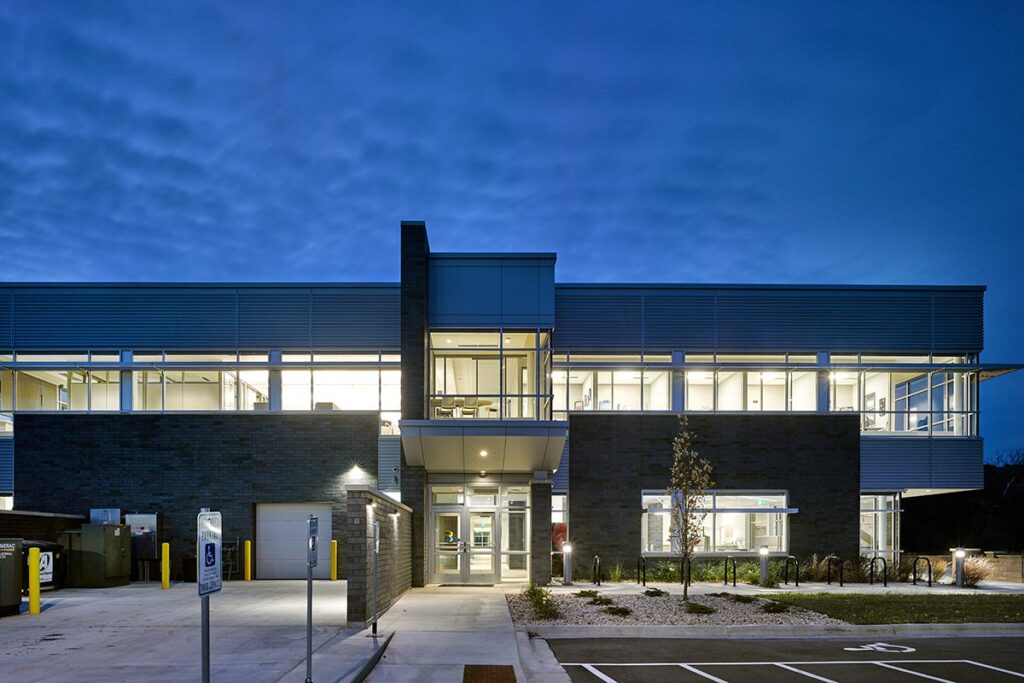OBJECTIVE:
Collective Collaboration
WiscNet is an organization that provides research and education networking services to public and private higher education, K-12 school districts, libraries, municipalities, and hospitals throughout Wisconsin.
WiscNet was looking to expand its workplace and showcase its strong brand identity. The goal was to have a collaborative and cooperative office that would connect its 25-member staff and organizational members. They desired a fresh, contemporary space that would create opportunities for the community to grow ideas and share strategies while maintaining a feel that was uniquely theirs.
SOLUTION:
Community Within
WiscNet underwent a master planning effort to determine the best fit for their new workplace. The result of that study placed them at the University Research Park in Madison within a 10,000 SF tenant suite. They chose this location for its proximity to bike paths, programmable outdoor space, and the opportunity for future growth.
The design goal was to create a fresh, contemporary, work environment that would also engage people socially. The completed design includes neutral finishes with branded pops of color that help create a vibrant workplace. Structured and spontaneous collaboration is integrated into the office plan through a mix of zones that provide employees with choices: private meeting spaces, open collaborative areas, one-person enclaves, and a work café outfitted with relevant technology. The Strategic Technology Lab provides another zone for heads-down development of both software and hardware, creating an efficient workstation in the open work area.
The floor plan optimizes natural daylight, with a 20’ living wall in the main entry offering a unique indoor/outdoor connection. The interior space was planned on a 45-degree angle to maximize daylight penetration and provide exterior views from the open office. To bring natural daylight into the core of the building, 13 skylights were strategically placed throughout the space and the 14-foot ceiling was left exposed and painted bright white. In addition to the skylights, three Solatubes provide natural light to the 20-foot living wall in the lobby and reception area. Frameless glass systems were used on the face of private offices and meeting spaces to allow further access to light and to enforce the open office aesthetic.
Strang designers worked closely with WiscNet leadership to create a fresh, contemporary, social working environment. This space re-centered focus on the organization’s mission and values. WiscNet features a “Community Within” approach that focuses on flexible, personal, user group, and virtual interaction (i.e., real-time web, voice, and video functionality). We created a branded office environment that supports each of these types of work now and well into the future.
















